Aviation History: What’s your state aircraft?
Let us help you choose
Most Every state has its official bird, flower, and sport—why not aircraft? Pennsylvania’s official aircraft is the Piper J–3 Cub, Connecticut has the Corsair F4U, Indiana has the Republic P–47 Thunderbolt, Tennessee has the Boeing B–17 Memphis Belle, and New Mexico the hot air balloon. But the rest of the states—while they have such oddities as official beverage (milk for many), official firearm (the flintlock in West Virginia and the Colt in Arizona), vegetable (watermelon in Oklahoma), and fabric (denim in California)—do not have an official state aircraft. What should be the official aircraft for your state? Our editors weigh in on their suggestions here, but we’d love to hear what you think. Email [email protected] with your official state aircraft ideas. Here’s what our editors suggest:
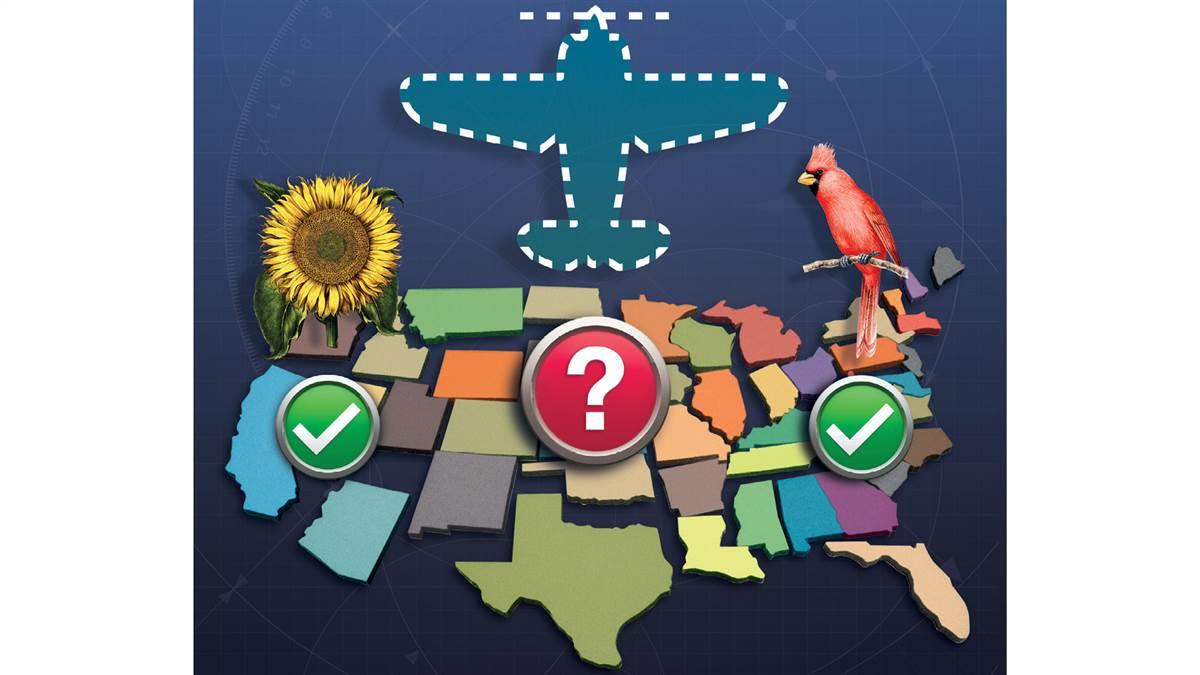
Alabama: Saturn V
Huntsville is considered the rocket capital of the world. The Saturn V rocket is prominently featured at the U.S. Space and Rocket Center, which honors the achievements of the U.S. space program.—JSW
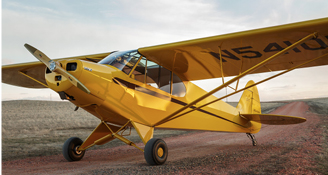 Alaska: Piper Super Cub
Alaska: Piper Super Cub
The Piper Super Cub is such an icon of the forty-ninth state it should be on its flag. Where other states might be proud of an airplane manufacturing legacy, the Super Cub, especially one on floats or tundra tires, is an indispensable part of life. —Ian J. Twombly
Arizona: MD Helicopters
I’ll go out on a limb and say MD Helicopters, with operations based in Mesa, is deserving of being called the Copper State’s official aircraft. The company didn’t begin there, but it has flourished there. —IJT
Arkansas: Stinson
Katherine Stinson earned her pilot certificate in 1912 in Pine Bluff, Arkansas, making her the fourth woman in the United States to earn a pilot certificate. Her flying inspired her brothers to start the Stinson Aircraft Co.—JSW
 California: SR–71 Blackbird
California: SR–71 Blackbird
The fastest jet ever built came out of the laid-back Golden State in 1966. The titanium spy plane was unlike anything the world had ever seen, but flying more than three times the speed of sound, adversaries didn’t see it very long. —Dave Hirschman
Colorado: Pilatus
Pilatus builds its PC–12 single-engine turboprops at its factory in Stans, Switzerland, but most are flown to the company’s support center at Rocky Mountain Metropolitan Airport in Broomfield, Colorado. Why Broomfield? I bet the nearby Rockies agreed with the Swiss. —Thomas A. Horne
Connecticut: Corsair F4U
Connecticut made the Corsair its official aircraft in 2005, recognizing that some 12,000 of the aircraft were built by Connecticut workers from 1938 to 1945 in manufacturing plants operated by Hamilton Standard, United Aircraft, Pratt & Whitney, and Sikorsky. —JSW
Delaware: Corporate aircraft
This tiny state punches above its weight when it comes to aircraft registrations. Corporation-friendly laws make the First State popular for businesses—and their aircraft—to incorporate. —Sarah Deener
Florida: Pitts
Self-taught aircraft designer Curtis Pitts dreamed up, built, and flew some of his most revolutionary airplanes during the many years he lived in Florida. In the 1940s, the former cropduster cobbled together enough parts to put together his first diminutive Pitts Special biplane. It, and the more powerful examples that followed, won world aerobatic championships and thrilled airshow spectators for decades.—DH
Georgia: Maule
The picture of B.D. Maule launching a high-wing taildragger out of a Moultrie, Georgia, hangar was seared into memory of many pilots when he demonstrated the rugged single’s short takeoff and landing ability. The family-run company is headed into its sixth decade with a four- or five-passenger aircraft lineup that also includes tricycle and amphibious versions.—David Tulis
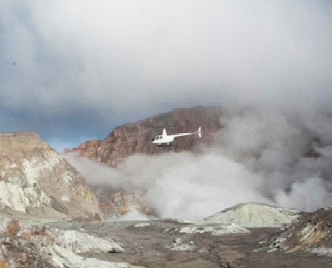 Hawaii: Tour Helicopters
Hawaii: Tour Helicopters
Going to Hawaii and not flying on a helicopter air tour is like going to Paris and avoiding the Eiffel Tower. The helicopter is a great symbol of the Aloha State. —IJT
Idaho: Quest Kodiak
Idaho has some rough terrain, and the Quest Kodiak is built to handle it. What better way to celebrate the state than with a homegrown airplane built for the geography?—IJT
Illinois: SBD Dauntless
The Dauntless was a World War II scout airplane and dive-bomber that was instrumental in the Battle of Midway, for which Midway Airport in Chicago is named.—DH
Indiana: Republic P–47 Thunderbolt
Indiana made the P–47 Thunderbolt its state aircraft in 2015, recognizing the “Indiana Warbird” produced in Evansville, Indiana, between 1942 and 1945, as the most-manufactured fighter airplane “before or since.”—JSW
Iowa: Silverwing
Clyde Cessna was born in Hawthorne, Iowa, and his first aircraft design was the Silverwing, an American version of the Blériot XI.—JSW
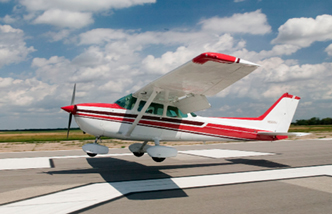 Kansas: Cessna 172
Kansas: Cessna 172
If there’s one machine that quietly works hard, isn’t boastful, but is well-known for its usefulness and utility, it’s the Cessna 172. Much like the industrious people of the Sunflower State, this tried and true airplane has stood the test of time. While many great aircraft have been made in Kansas, none have contributed to the aeronautical zeitgeist quite like the trusty Skyhawk.—Paul Harrop
Kentucky: Cessna Cardinal
The Cardinal is Kentucky’s state bird, so why shouldn’t the Cessna Cardinal be its state airplane? The Cessna 177 was conceived in the mid-1960s as a replacement for the 172 and featured a cantilever wing and improved visibility, because the pilot sits ahead of the wing’s leading edge—but Skyhawk production was maintained.—Mike Collins
Louisiana: Huff-Daland Duster
Monroe, Louisiana-based Delta Air Service sprung to life with a fleet of 18 Huff-Daland Duster agricultural aircraft and later morphed into the passenger service we know as Delta Air Lines. The 1924 “Huffer-Puffer” is considered the first agplane and it was used to eradicate the boll weevil from Southern cotton fields. The company was headquartered in Monroe from 1925 to 1940 before permanently moving to Atlanta.—DT
Maine: Lake amphibious aircraft
With numerous bodies of water large and small, Maine has a healthy seaplane population. It’s also where Lake Aircraft manufactured its amphibious aircraft until 2004, at a factory in Sanford. The company built and sold thousands of four-place models, running on Lycoming IO-360 180- and 200-horsepower engines. They are still in production, but no longer built in Sanford. —Jill W. Tallman
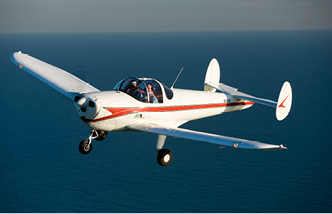 Maryland: Ercoupe
Maryland: Ercoupe
Ercoupes were built in Maryland, on an airstrip near the College Park Airport, which also happens to be the oldest continuously operating airport in the United States. Like the state itself, the two-seat Ercoupe is small and tough. Its designer, Fred Weick, created a two-control system that linked the rudder and aileron controls with the steerable nosewheel. The company set out to convince a generation that anybody who could drive a car could fly an airplane. (Did you know Ercoupes were sold at department stores?) —JWT
Massachusetts: GeeBee
The five Granville brothers—Zantford, Thomas, Robert, Mark, and Edward—designed and built some of the fastest piston airplanes ever made in Springfield, Massachusetts. Gen. Jimmy Doolittle set a speed record of 296 mph in a GeeBee Super Sportster R–1 in 1932. In 2013 the Sportster Model Z became a Hallmark Christmas ornament in its “Sky’s the Limit” series.—JWT
 Michigan: Waco Classic
Michigan: Waco Classic
The Waco Aircraft Co. of Battle Creek harkens back to aviation’s golden era with radial engines, fabric covering, and wood-winged biplanes that are widely recognized as flying works of art. The detail-oriented craftsmanship that goes into each airplane is unsurpassed, and the avionics that go into some of the instrument panels are thoroughly modern. Waco continues to capture the imagination of aviation enthusiasts with new products such as its three-person, 300-horsepower 2017 amphibious floatplane (see “Mind Bender,” page 50). —DH
Minnesota: Cirrus
Cirrus Aircraft makes more single-engine piston aircraft than anyone these days, and its Duluth headquarters is a symbol of its continued success.—IJT
Mississippi: Stearman agplane
After World War II, many Boeing Stearman Model 75 biplanes—PT–17s, if you prefer—were sold at auction and modified for use as crop dusters. This adaptation accelerated the growth of the aerial application industry, and preserved countless Stearmans for later restoration. Today the National Agricultural Aviation Association Museum is in Jackson.—MC
 Missouri: 'Spirit of St. Louis'
Missouri: 'Spirit of St. Louis'
Charles A. Lindbergh’s historic flight put this Midwestern town on the map even though its relationship with flight is simply as Lucky Lindy’s hometown; his supporters in St. Louis paid for the aircraft. The Ryan NYP monoplane started America’s love affair with aviation.—JSW
Montana: Cessna 185 Skywagon
For a state known as Big Sky Country, could any airplane be more appropriate than the Cessna 185 Skywagon? Big and powerful and capable of hauling a lot of stuff a long way, the 185 is able to get in and out of those high-altitude mountain strips.—JWT
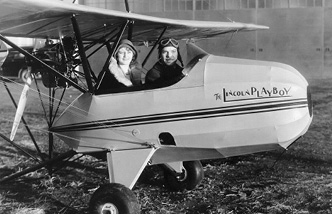 Nebraska: Lincoln Playboy
Nebraska: Lincoln Playboy
The 350-pound Lincoln Playboy, built in the 1930s by the Lincoln Aircraft Company, could fly 70 miles per hour; its 25-horsepower engine burned just one gallon an hour. Alas, sales never took off. —MC
Nevada: Aurora
Nevada’s most famous airplane has to be the Aurora—a super-secret, Mach 6, scramjet-powered reconnaissance spyplane. Witnesses claim to have seen the elongated, triangular design over Scotland, its “doughnuts on a rope” contrails over Texas, and heard its sonic booms over southern California. Does it exist at all? The only way to learn that would be to visit its purported Nevada home—Area 51.—TAH
New Hampshire: Martin B–26 Marauder
Getting to the New Hampshire connection is like playing “Six Degrees of Kevin Bacon": The Martin B–26 Marauder was built by the Glenn L. Martin Company. The twin-engine bomber entered service during World War II, where it was flown in the Pacific Theater, the Mediterranean Theater, and Western Europe. Anita Paul, born in Nashua, New Hampshire, was a member of the Women Airforce Service Pilots, the all-women’s paramilitary aviation organization that ferried aircraft during the war. It's likely Paul flew a B–26. —JWT
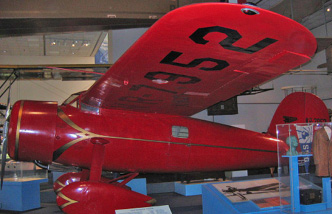 New Jersey: Lockheed Vega
New Jersey: Lockheed Vega
A jab would be to say that New Jersey’s state aircraft should be anything big that lands at Teterboro. However, I nominate the Lockheed Vega—the airplane Amelia Earhart flew on her solo, transatlantic flight. Earhart’s mechanic, Ed Gorski, worked to make the Vega capable for the long trip. He purchased Lincoln Park Airport (N07) in 1946, a GA airport that is alive and well. —JWT
New Mexico: Hot air balloon
New Mexico made the hot air balloon its official state aircraft in 2005 in recognition of the annual International Balloon Fiesta held in Albuquerque.—JSW
New York: Grumman
When I think of New York airplanes, I think of Grummans: Wildcat, Hellcat, Bearcat, and let’s not forget the F–14 Tomcat. If Connecticut can have the Corsair, New York should get the Grumman cats. —DH
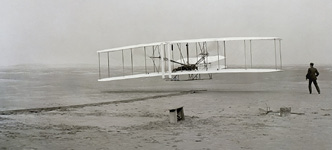 North Carolina: Wright Flyer
North Carolina: Wright Flyer
The Wright brothers made the first recorded manned, powered flight from Kill Devil Hills in North Carolina on December 17, 1903. Enough said.—JSW
North Dakota: Drones
Grand Forks has cemented itself as a drone research powerhouse. Between the University of North Dakota’s impressive drone research programs and the FAA’s drone center, North Dakota is a state of drones.—IJT
 Ohio: North American T–2 Buckeye
Ohio: North American T–2 Buckeye
How did the North American T–2 Buckeye get its name? The two-place Navy training jet, which first flew in 1958, was produced in Columbus, Ohio. More than 500 were built. Navy and Marine Corps aviators could use it from first jet flight to aircraft carrier qualifications.—MC
Oklahoma: Spartan Executive
It’s the airplane that defined business aviation, and it did so with a class not yet matched. The art-deco stylings of the 34 examples made still cause pilots everywhere to stare in wonder. The all-metal fuselage, spacious interior, speed, and range made this Tulsa-born beauty the choice of kings and industrialists. —PH
Oregon: Van’s RV
Some cool airplanes have come out of Oregon, but none more iconic than the RV. The Cessna of the Experimental world is based in Aurora. With roughly 10,000 kits completed, the RV is an icon of individual craftsmanship and creativity. —IJT
Pennsylvania: Piper Cub
Pennsylvania made the Piper J–3 Cub its official aircraft in 2014 when then-state Rep. Mike Hanna said: “Let the world know that Lock Haven gave birth to the plane whose popularity in peace and war remains unparalleled.”—JSW
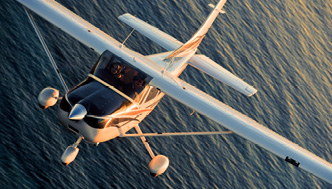 Rhode Island: Cessna 182
Rhode Island: Cessna 182
The Ocean State never manufactured Cessnas, but North Central State Airport was the launch point in 2016 for a Cessna 182 that made a transcontinental trip on biofuel. The Bioflight’s pilot Ross McCurdy is a graduate of Rhode Island College and a teacher at Ponaganset High School.—JWT
South Carolina: B–25 Mitchell
Jimmy Doolittle's Tokyo Raiders trained on the B–25 Mitchell bomber in Columbia, South Carolina, before launching a one-way attack on the Japanese islands from the aircraft carrier USS Hornet in WWII.—JSW
South Dakota: Douglas C–47
The Douglas C–47 Dakota military transport bears the name of one of the most remembered Native American tribes of the Midwest.—JSW
Tennessee: 'Memphis Belle'
Tennessee designated the Boeing B–17 Flying Fortress Memphis Belle its state aircraft in 2017. —JSW
Texas: P–51 Mustang
North American built and flew the first of its pivotal P–51 Mustang fighters in 120 days, and it took an equally short amount of time to build the company’s sprawling factory near Dallas. All the history-changing C-model Mustangs were built in Texas, as well as more than 80 percent of the North American T–6 Texan advanced trainers manufactured during the war. —DH
Utah: Lockheed-Martin F–35
On August 2, 2016, the U.S. Air Force’s 34th Fighter Squadron, part of the 388th Fighter Wing based at Hill Air Force Base, Utah, was the first Air Force unit to achieve initial operating capability with the F–35A Lightning II. The squadron’s history dates to World War II.—MC
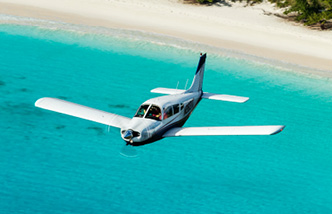 Vermont: Piper Arrow
Vermont: Piper Arrow
Miss Vermont 2017, Erin Connor, brought GA into the spotlight last August when she flew a Piper Arrow to Atlantic City, New Jersey, to compete in the Miss America pageant. Her platform encouraged women to enter the science, technology, engineering, and mathematics fields. —JWT
Virginia: A wine balloon
In 1801, William and Mary College student J.S. Watson wrote a letter describing three attempts to fly unmanned hot air balloons from the Court House Green. The first two were unsuccessful, but the third balloon—decorated with 16 stars for 16 states, and fueled with spirits of wine—flew.—SD
Washington: Boeing
Could there be any argument that Boeing rules Washington? Yes, the company manufactures in other states now as well, but the Seattle area remains Boeing country.—IJT
West Virginia: Bell X–1
The Bell X–1 was designed in 1945. With U.S. Air Force Capt. Chuck Yeager at the controls, it was the first aircraft to break the sound barrier. Yeager was born in West Virginia (as was I). —Chris Rose
Wisconsin: Experimentals
The Acro Sport and Acro Sport II biplanes are the handiwork of Experimental Aviation Association founder Paul Poberezny, whose organization popularized kit airplanes and the spirit of innovation behind them. EAA’s annual convention in Oshkosh has grown into the world’s largest and possibly the most influential aviation gathering on the planet, and it draws all facets of flying together for an event that must be experienced to be believed. —DH
Wyoming: Aviat Husky
If ever an airplane reflected its surroundings, Aviat’s rugged Husky is the one. Made for short, rough, high-altitude airstrips, fabric-covered Huskys have been hand-built in Afton since the late 1980s.—DH
